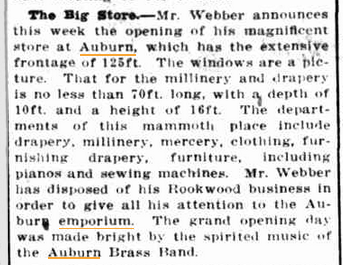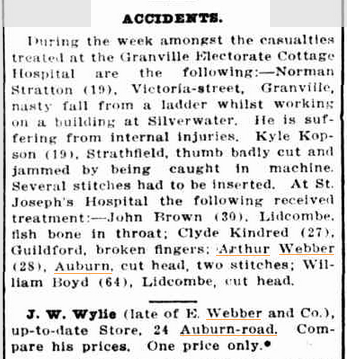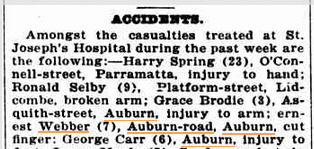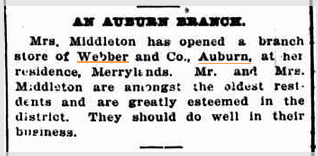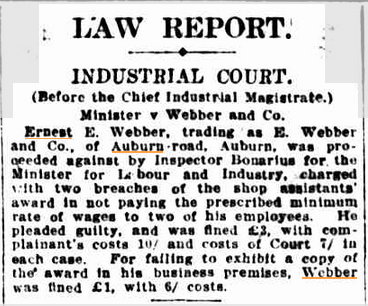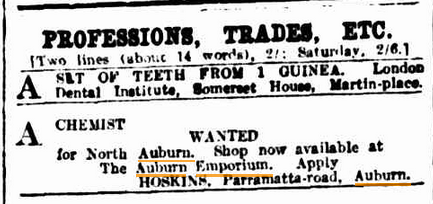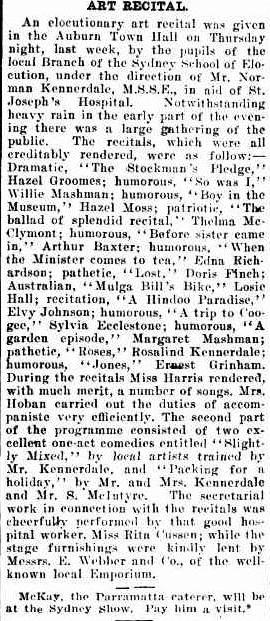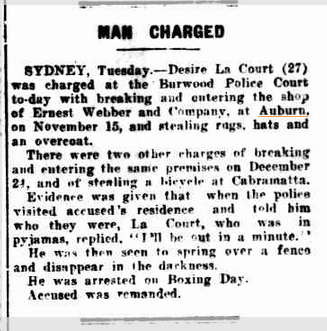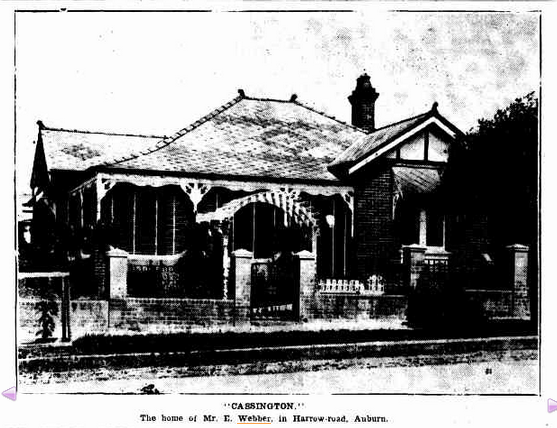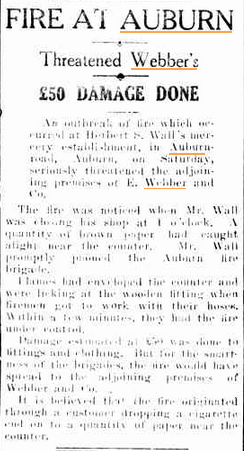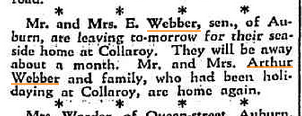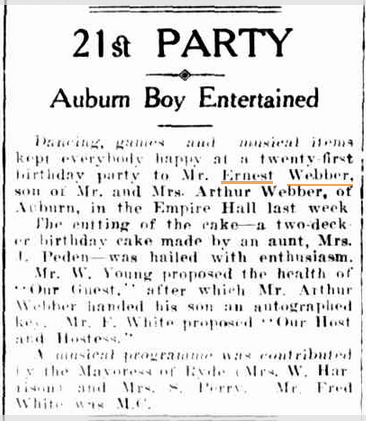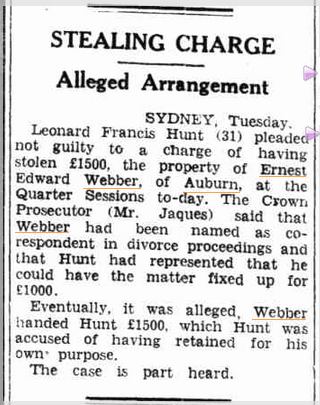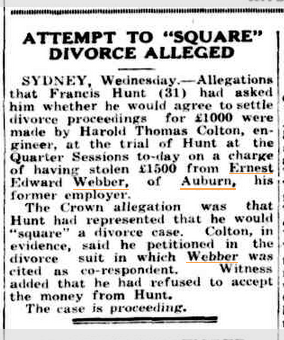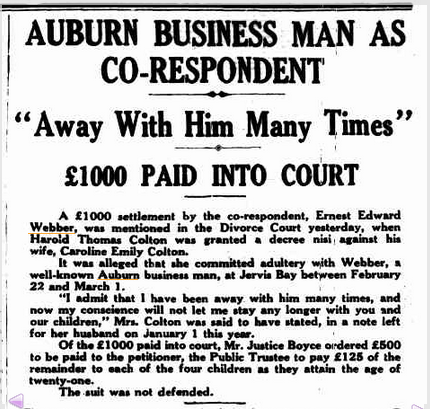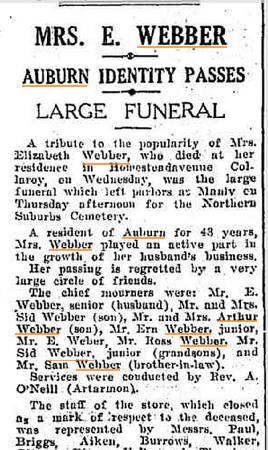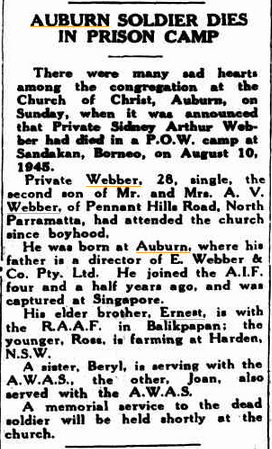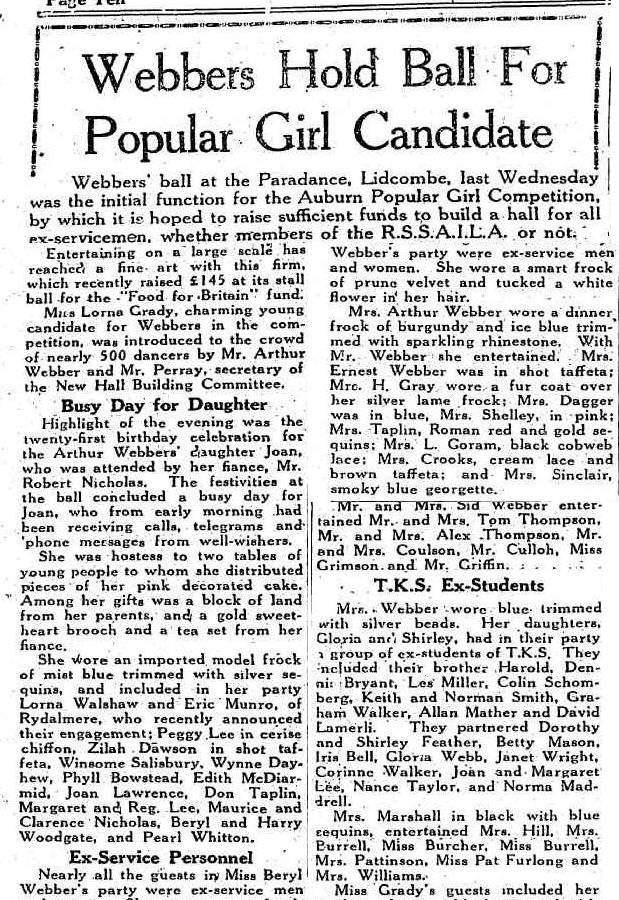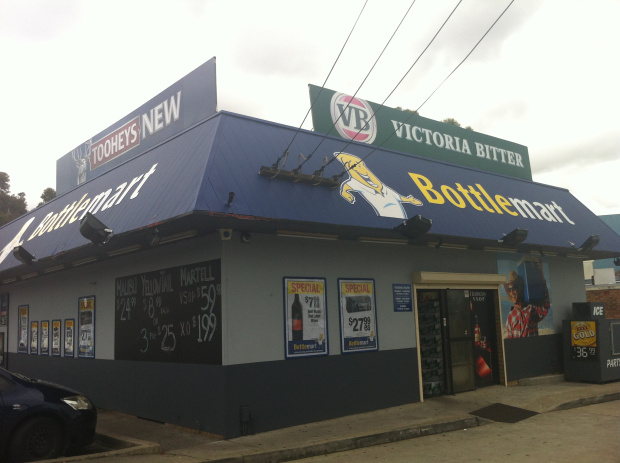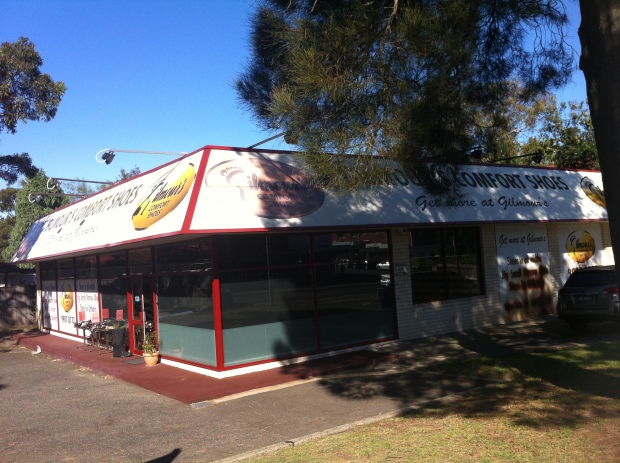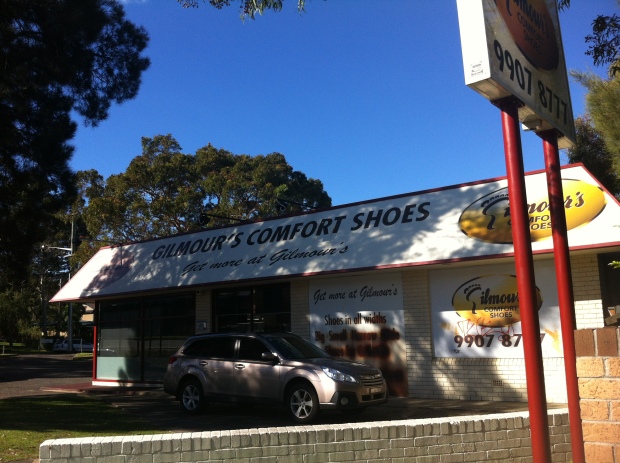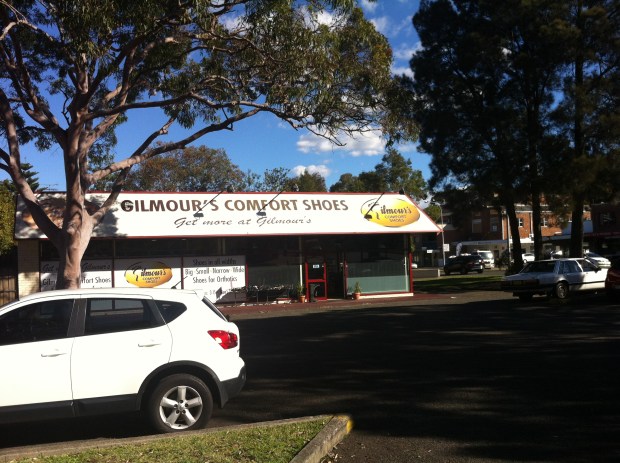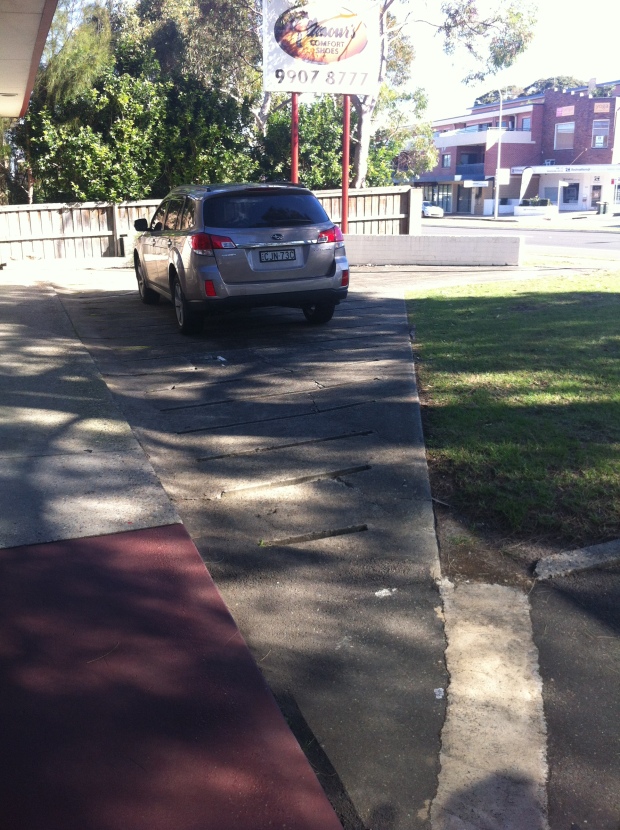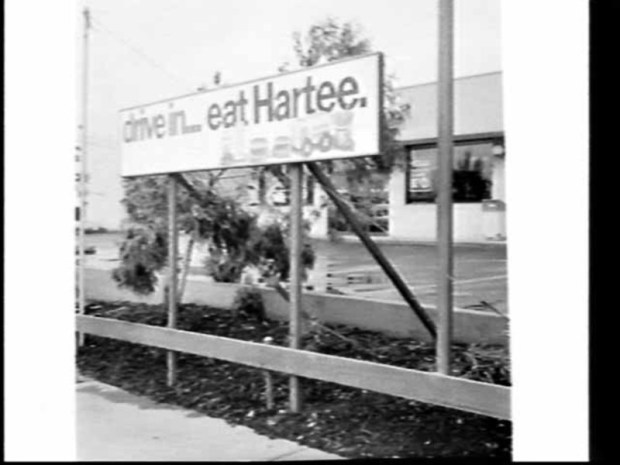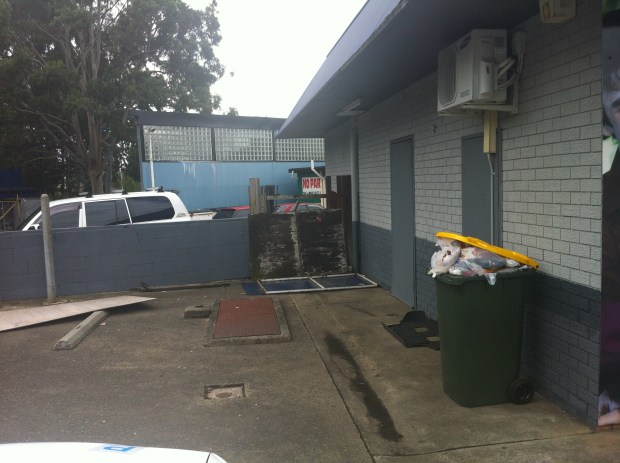The Auburn Emporium – Auburn, NSW
Let’s take another trip to that seemingly bottomless well of source material, Parramatta Road. If this Australian Women’s Weekly logo looks ancient to you, that’s because it is. In fact, I’d say there’s a good chance the magazine itself sported this logo the last time it was on sale at this location, which was most recently known as Danny’s Newsagency. But what’s happened to the sign there?
Oh, well this changes everything. Before Danny moved in, the newsagency was Brown’s domain. Perhaps the AWW sign belonged to Brown in the first place. Case closed, unless the awning offers us any more clues…
 No. It was Brown’s Newsagency, then Danny’s, and now it’s a freight company called BLM, which is apparently just too busy to take down some old, misleading signs. Mission accomplished, what a great story, we can all go home. Was it good for you too? Seriously, why can’t these shops just present a decent front? If BLM wanted more business, why wouldn’t they dust themselves off a bit (unless they don’t want more business ON PURPOSE)? Does the rest of this row of shops have the same issue?
No. It was Brown’s Newsagency, then Danny’s, and now it’s a freight company called BLM, which is apparently just too busy to take down some old, misleading signs. Mission accomplished, what a great story, we can all go home. Was it good for you too? Seriously, why can’t these shops just present a decent front? If BLM wanted more business, why wouldn’t they dust themselves off a bit (unless they don’t want more business ON PURPOSE)? Does the rest of this row of shops have the same issue?
On the east corner we’ve got Blossoms wholesalers of health, beauty and ugg. Great combo. Looks like they ran out of yellow paint before they could disguise the fact the place used to sell:
..’beding’, among other things. Great. What’s that up there?
You can’t have freezers without fridges. Oh look, the building was finished in 1912. I bet they weren’t this lazy or negligent back then. Next…
 The next door down offers no such insights – it’s a boring restaurant. Beside that, it’s this accountant. And a pretty busy one right now I’m sure, given what time of the year it is. Yawn…I’d imagine this place wasn’t so pedestrian in 1912, a time when Parramatta Road wasn’t a huge embarrassment to the city and a great place to park your car on weekends. It would have had a purpose, it would have been the product of some dude’s life’s work. It would have stood out from the crowd and meant something rather than just taken up space with its ugliness.
The next door down offers no such insights – it’s a boring restaurant. Beside that, it’s this accountant. And a pretty busy one right now I’m sure, given what time of the year it is. Yawn…I’d imagine this place wasn’t so pedestrian in 1912, a time when Parramatta Road wasn’t a huge embarrassment to the city and a great place to park your car on weekends. It would have had a purpose, it would have been the product of some dude’s life’s work. It would have stood out from the crowd and meant something rather than just taken up space with its ugliness.
Yeah, I’d like to think this was something really special…back in the day…
Mr. Webber had sold his other business at nearby Rookwood, presumably the one on which he had built his name, because he had such faith in this place. Wow. “The windows are a picture.” Wow! They sold pianos and had the Auburn Brass Band on site to celebrate the opening. It’s hard to believe that such an event could once have gone on at this place we’ve seen today, but there you go.
Don’t let anyone tell you department stores aren’t a cut-throat (or cut-head, in this case) industry, just like I won’t let anyone tell me that Wylie’s departure from Webber’s empire and Arthur Webber’s injury are just a coincidence. In fact, let’s concentrate on Wylie’s little advertisement for a moment. First, he’s taken it out in the accidents section of the paper, which doesn’t bode well. Second, he’s done it directly below an account of his former employer’s misfortune. Third, he’s included the snide ‘up-to-date Store’ dig, as well as imploring thrifty shoppers to ‘compare his prices’ (to whom, I wonder?)…and yet the very next line tells you there’s one one price to compare. In case you’re interested, his address is a Westpac bank today, which means this paragraph is his legacy. Suck it down, Wylie.
Gee, the Webbers seem a little…accident-prone, don’t they? In 1921 young Ernest Webber (son of Arthur) cut his finger. And it made the paper. Slow news year, perhaps?
So successful was the Webber store that a Mrs. Middleton took the fight to Merrylands. I wonder how it turned out?
Ernest E. Webber (who I’m assuming isn’t the seven-year-old with a bandaid on his finger) copped a heavy fine of four pounds for not paying two of his employees the minimum wage. No wonder Wylie left. Shoulda just paid ’em, Ernie.
Just don’t expect minimum wage. Hey, what a deal there at the top: a set of teeth from one guinea. Yuck.
The Webbers, still in PR crisis mode, provide the furnishings to a local recital. We haven’t forgotten about the third world wages, Ern.
And neither has Desire La Court (what a name). Read that thrilling tale of escape in the third paragraph, and tell me it wouldn’t make a great white-knuckle thriller starring Channing Tatum.
Here’s Webber’s castle, paid for by the unpaid wages of his workers.
I can’t decide whether my favourite part of this story is the thief begging Webber not to call the cops and then offering to drive Webber to the police station, or him playing the ‘my wife and kids’ card for sympathy and later denying having done so. It’s just a quilt, Webber. Even if he did nick it, let him have it. The Depression’s coming.
And now they know: don’t throw a lit cigarette onto piles of paper.
Good thing they advertised this, now all the thieves out there with a copy of the 1927 paper and a map will know his house is empty.
Young Ernest Webber, last seen blubbering like a baby over a cut finger, has turned 21. Lock up your daughters! Nice cheapskate present, Dad – an autographed key. “My signature will be worth a lot of money in a few years, son…”
Do you think Mark Foy was this plagued by thievery?
This plagued? This seems just a little suss, don’t you think?
The plot thickens. I like the use of quotation marks around “square”, as if to square this divorce meant some drastic action.
And finally the truth comes out! Picture the headlines: “Webber of Deceit”. I wonder if Webber’s trip to Jervis Bay was advertised in the paper? Maybe all those other times Webber was thieved from was the result of some cuckolding. I can only imagine how his wife must have felt…
Oh.
From philandery to philanthropy. Wisely replacing the adulterous E. Webber as media spokesperson, Arthur Webber sets off on his quest to repair the Webber reputation, 150 shoppers at a time. I’m guessing they had a sign, “Toilet and air-raid shelter for customers only.”
With the war over, the Webbers put some distance between the scandals and tragedies of the past by backing the Auburn ‘Popular Girl’ Competition. Really rolls off the tongue, doesn’t it? You’re pretty much asking for trouble inviting someone named ‘Mrs. Crooks’ to your fancy ball, especially given your history, Webbers.
Sadly, this grand event is where the Webber story comes to an end. The trail went cold, and nothing more hit the papers. But despite the abrupt and mysterious ending it kind of feels like we were right there with them…almost like we were one of them. Do we need to know what happens next? Do we need the sad details of the day the Webbers signed their pride and joy over to Brown of Brown’s Newsagency? Of the day one of the shops was demolished to make room for Gypsy Leather, ruining the established style? Probably not. The best years are behind us at this point, and we’ve only the advent of Danny’s Newsagency to look forward to. We can use our imaginations to fill in the blanks.
Plus it’s been an adventure. We’ve laughed, we’ve cried, we’ve been scandalised and burglarised, but above all, we’ll never look at this innocuous little row of shops with the same eyes again. Right? Here it is again, just to be sure:
Past/Lives Flashback #5: The Hartee’s Saga, Part V: Hartee’s Revenge – Manly Vale, NSW
Original articles: The Hartee’s Saga Parts I, II, III and IV
Sometimes it’s hard to keep a good burger down. For those who haven’t followed the long, sad story of the Hartee’s hamburger franchise, here’s a quick recap.
With the advent of American fast food franchises in Australia in the late 60s and early 70s, Kelloggs teamed with the US-based Hardees burger chain to start Hartee’s, the first Australian fast food restaurant (despite its very red white and blue beginnings).
It was a near-instant success. Whether it was down to underlying xenophobia towards overseas brand names, smart management or just plain delicious burgers, by 1973 Hartee’s was king of the fast food hill in Australia.
Complacency became the daily special from then on, with a series of extravagant HQ upgrades and new outlets sprouting like weeds all over Sydney. Despite this, the chain was beginning to haemorrhage cash at a pretty severe rate, and McDonald’s was aggressively making major headway into the Australian scene. Something had to give.
And give it did, here at the Bankstown Hartee’s in 1975, when a current affairs program, acting on a tip-off, exposed the outlet as having served dog food in burgers. Overnight, Hartee’s packed up and disappeared, leaving only husks behind, and that’s where the story seems to end.
Except thanks to reader Phil, there’s a final piece of the puzzle to be put in place. I’d previously written that only the four former Hartee’s above still existed in any form around Sydney… Well, we all make mistakes. Just ask Bankstown Hartee’s.
Behold, the Manly Vale Hartee’s still stands. It’s currently Gilmour’s Comfort Shoes, but it pretty obviously fits in with the Hartee design.
In fact, this may be the most well-preserved Hartee’s still in existence. The Gilmour’s sign appears to be stuck on over the red roof, so it’s possible the Hartee’s logo remains underneath.
The original lights are still in place, designed to illuminate the Hartee’s name. Also still in place, as per Phil’s advice…
The original outdoor seating area! Now it’s presumably the shoe shop manager’s car park (c’mon, look at the prestige offered by that strange piece of land). Inside are just shoes, but really, they’ve served worse and called it burgers.
It’s not really a happy ending, or an ending at all, but it is (I’m guessing) the final footnote on what by now must be the most definitive account of the Hartee’s affair out there. There are still many mysteries surrounding the story (truly, more questions are raised than answered), but maybe one day one of those faceless, guilt-ridden Hartee’s executives will come out of hiding and reveal more. Hell, I’d even settle for the guy who served the dog food. As ever, if you know more, please let Past/Lives know. And RIP Hartee’s – we hartlee knew ye.
In the meantime, let’s take a minute to remember those four powerful words that watered more mouths than Mount Franklin, that were a city’s guilty pleasure in a time before Big Macs and Whoppers…in a time when a nation could feed itself.
The Hartee’s Saga, Part IV: The Shocking Conclusion – Bankstown, NSW
Continued from Part III…
In mid-1975, Willesee, a current affairs program on Channel 7, received a tip-off from Bankstown Council garbagemen that a hamburger restaurant at Bankstown had, on a regular basis, some very odd items in its dumpsters out the back. When reporters from the program went down to the Bankstown Hartee’s to investigate, they found that the bins outside were full of dog food cans. Further investigation revealed that the dog food was in fact being sliced into patties and used on the burgers at this particular location:
The devastating report went to air, cripping the Hartee’s brand in the public eye. Despite there being no evidence that such a practice went on in other Hartee’s locations, Kelloggs quickly and quietly abandoned its fast food venture. No official comment was given other than a generic ‘the venture was no longer profitable’ statement.
Almost overnight, all Hartee’s locations were closed and sold. Today, almost nothing remains of the Hartee’s legacy except the stores documented in this series. The Bankstown location subsequently became a Chinese restaurant and a variety of bottle shops. Other locations, such as Hartee’s Liverpool, Manly Vale and Kogarah, have since been demolished.

Hartee’s Kogarah, November 1973. Now part of the St. George Hospital car park. Image by Jack Hickson/State Library of NSW.
As previously mentioned, Kelloggs planned to open more than 100 locations around the country, but only 17 were ever opened. It wasn’t until Red Rooster, and even more successfully, Oporto, that an Australian-owned fast food brand managed to establish itself.
Had the scandal not occurred, Hartee’s may have emerged as the primary fast food outlet in Australia today instead of fading into obscurity, but thanks to the actions of some goofballs on minimum wage, it’s a world we’ll never know.
HEARTY UPDATE: There’s more. Always can do one more.






